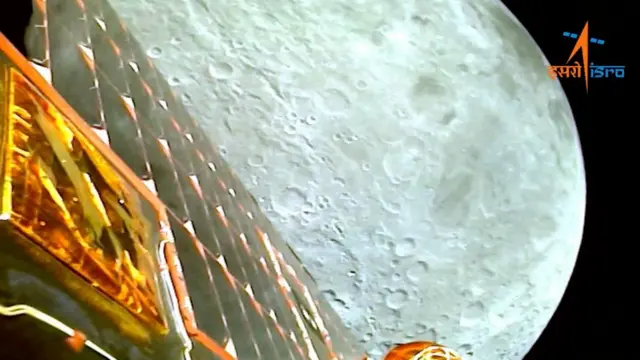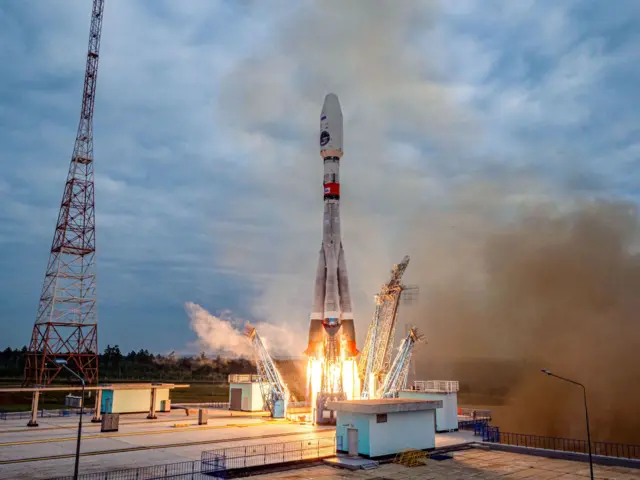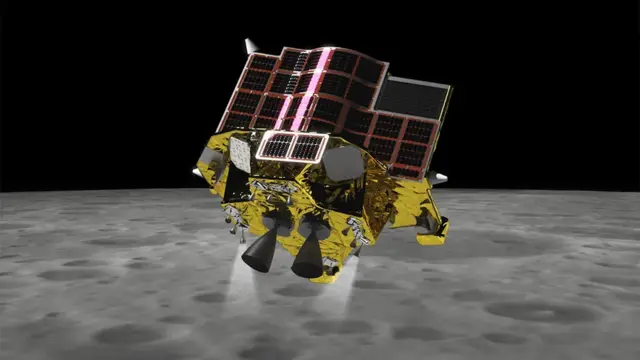Watch alongpublished at 15:02 GMT 19 January 2024
Just a reminder that you can also watch live coverage of the attempted landing by clicking the Play button above.
Japan's space agency says it's communicating with its un-crewed craft "Moon Sniper" after it landed on the lunar surface
But scientists say the craft's solar generators aren't working - it's relying entirely on batteries
Japan's space agency is now rushing to fix the solar generators before the batteries run out
The landing means Japan becomes only the fifth country to land on the Moon after the US, the former Soviet Union, China and India
The Japanese spacecraft aimed to land within 100m (328ft) of a location near the Shioli crater, on the near side of the Moon - scientists are still confirming if they've managed this
Last year, India made history when it successfully landed a spacecraft near the south pole of the Moon
Edited by Alex Therrien and Andrew Humphrey
Just a reminder that you can also watch live coverage of the attempted landing by clicking the Play button above.
As we mentioned earlier, the last country to successfully land a spacecraft on the Moon was India.
In August 2023, India's Vikram lander from the Chandrayaan-3 spacecraft landed near the lunar south pole.
It prompted celebrations across the country, with Prime Minister Narendra Modi saying "India is now on the Moon".
The mission was also celebrated for its cost-effectiveness, costing 6.1bn rupees ($75m; £58m) - famously less than it cost to make the movie Interstellar.
 Image source, Reuters
Image source, ReutersA view of the moon as viewed by the Chandrayaan-3 lander, August 2023
Japan's Slim mission launched back in September 2023.
You can watch the successful rocket launch below.
Japan joins race to Moon with successful rocket launch
 Gem O'Reilly
Gem O'Reilly
Live reporter
 Image source, EPA
Image source, EPARussia's first moon mission in 47 years failed when its Luna-25 space craft spun out of control and crashed into the Moon
And here's a bit more on some of those recent failed attempts to land on the moon.
Last year, a Russian attempt failed when its probe spun out of control and crashed into the Moon after a problem preparing for pre-landing orbit.
The same happened for the Japanese startup ispace inc, external which failed a Moon landing because of altitude miscalculation.
And just last week a US startup, Astrobotic, suffered a fuel leak, forcing it to abandon its touchdown.
No private companies across the world have achieved a soft landing on the Moon’s surface.
 Jonathan Amos
Jonathan Amos
Science correspondent
Only about a half of all attempts to reach the lunar surface have succeeded.
This is true not just of the “old era” of Moon exploration in the 1960s-70s, but of the modern era, too.
If you consider just those soft-landing attempts this century, starting with the Chang’e-3 mission in 2013, we’re currently four from 10.
That’s three Chinese successes and one Indian success.
The six failures by country:
 Jonathan Amos
Jonathan Amos
Science correspondent
Slim’s main objective is to test new precise-navigation technologies.
Its goal is to put down within 100m(330ft) of the targeted location near Shioli Crater.
If there are places on the lunar surface you want to study, it makes sense to land as close as possible, otherwise you have to travel large distances across the surface.
Slim is equipped with cameras, radar and a laser range finder.
But the real trick is the software. It will be taking pictures of the surface as it descends and cross-matching those with detailed crater maps.
It will be doing this in near-real time, making adjustments to its engine firings to reach the target and avoid potential hazards. Japan has made some of our best maps of the surface of the Moon with its Selene orbiter which operated between 2007 and 2009.
 Jonathan Amos
Jonathan Amos
Science correspondent
Japan’s space agency Slim (Smart Lander for Investigating Moon) mission will aim for a gentle slope, close to an equatorial crater called Shioli.
It is due to start a 20-minute touchdown phase from 15:00 GMT.
The bid follows the failure this month of a private American company to reach the lunar surface. Statistically, it's proven very hard to land on Earth's natural satellite safely.
If today’s mission is successful it will make Japan only the fifth country in the world to put a spacecraft on the Moon.
The other four nations are the US, China, the former Soviet Union and India, which joined the elite club in August 2023.
But this isn’t an easy mission and the SLIM project has been in development for more than two decades.
It is the Japanese space agency’s second moon landing attempt after it lost contact with the OMOTENASHI lander in 2022.
The agency has successfully landed twice on small asteroids but landing on the Moon is more difficult due to its gravity.
Alex Therrien
Live reporter
 Image source, JAXA
Image source, JAXAJapan is aiming to become the fifth country to land on the Moon
Bad space puns aside, welcome to our live coverage of Japan’s attempt to become the fifth country in the world to land a spacecraft on the Moon.
The Smart Lander for Investigating Moon , external- or the more snappy “Moon Sniper” as it’s been dubbed - was launched back in September 2023.
If all goes according to plan, it will touch down at about 15:20 GMT today, which is 00:20 on Saturday in Japan Standard Time.
The aim of the mission is to search for water and other elements that could sustain life and human habitability on the Moon.
But a successful landing would also mark a big step forwards for Japan in the space race. Only the US, the former Soviet Union, China and India have successfully landed spacecraft on the Moon.
Stay with us as we follow the outcome of the mission.